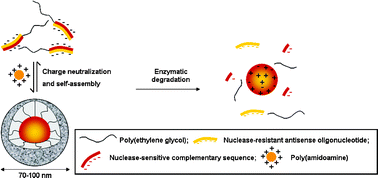Synthesis and enzymatic stability of PEGylated oligonucleotide duplexes and their self-assemblies with polyamidoamine dendrimers
Abstract
The objectives of the current study were to design and characterize poly(ethylene glycol) (PEG)-based carriers for antisense


 Please wait while we load your content...
Please wait while we load your content...